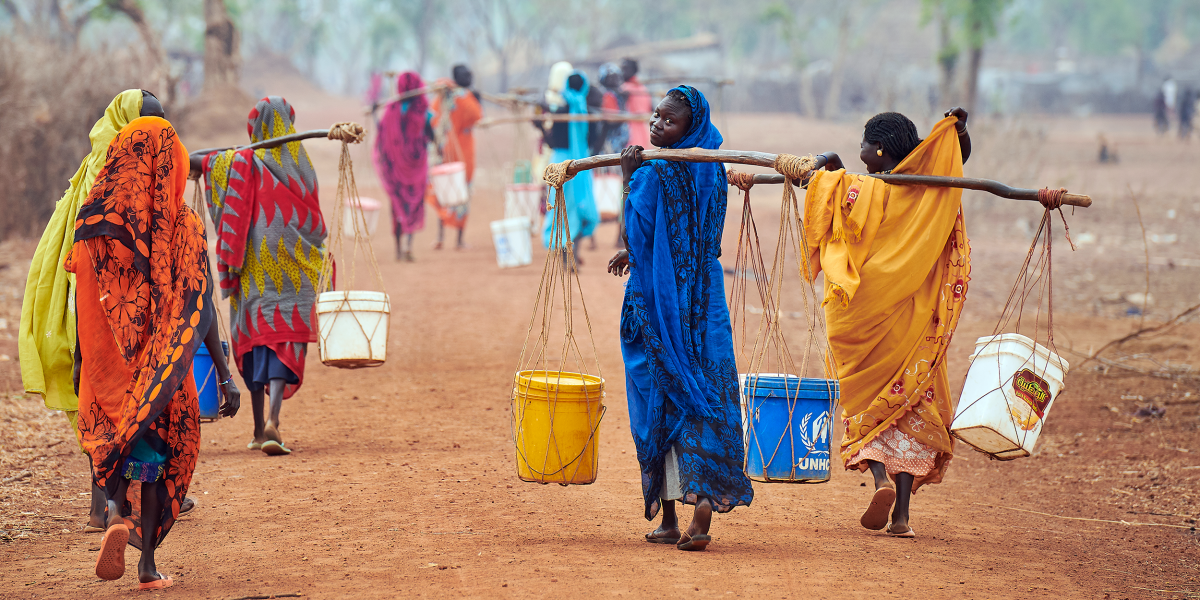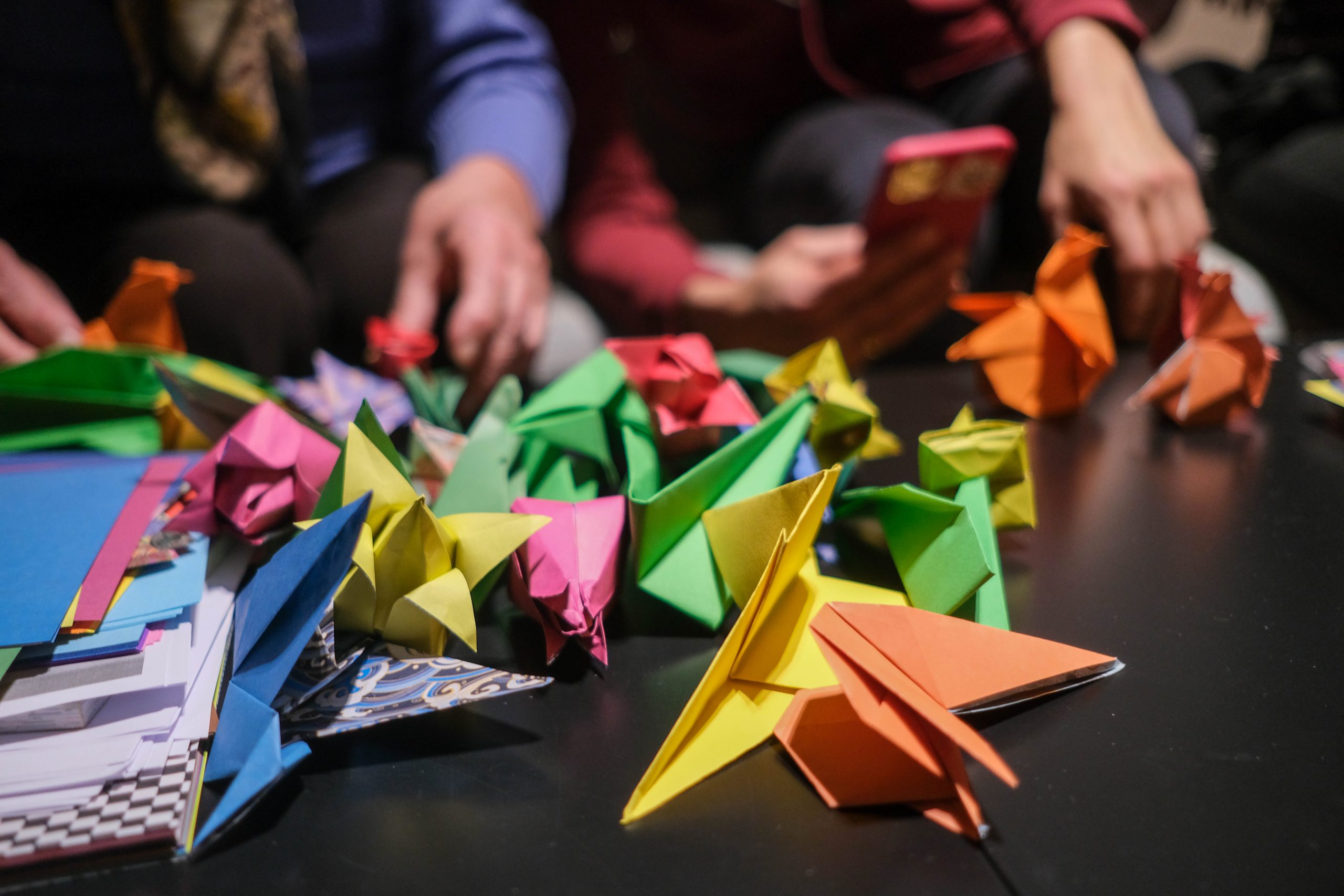Earth Day 2021: Susan Martin Talks Climate Displacement & Migration
22 April 2021

 Susan Martin held the Donald G. Herzberg Chair in International Migration and founded and led the Institute for the Study of International Migration in the School of Foreign Service at Georgetown University.
Susan Martin held the Donald G. Herzberg Chair in International Migration and founded and led the Institute for the Study of International Migration in the School of Foreign Service at Georgetown University.
Previously, she served as the Executive Director of the U.S. Commission on Immigration Reform, established by legislation to advise Congress and the President on U.S. immigration and refugee policy.
She sits on the Board of JRS/USA.
-
What is climate displacement? Who is considered a climate migrant or ‘climate refugee’ (though this term isn’t endorsed by UNHCR)?
In 2010, the parties to the UN Framework Convention on Climate Change set out three forms of human mobility that could arise as a result of the adverse effects of climate change. The first they designated was migration, and by that they generally were talking about movements that were in anticipation of worsening conditions ahead because of climate change. The second type of mobility was displacement. These are reactive movements that occur because usually of acute natural hazards that are also related to climate change in that those hazards, such as cyclones or floods peak have become more intense and more frequent as a result of climate change. Then the third form of mobility was planned relocation.
These would be situations in which whole communities will no longer be able to remain where they are and will need help from governments and other agencies in order to be able to find land elsewhere, relocate to that to those new places and be able to integrate into a new society. You notice that the term that was not used was a climate refugee. That’s because the vast majority of those who will be adversely affected by climate change and move as a result of that will now qualify as refugees. By the standards set in the U.N. convention relating to the Status of Refugees, that convention applies only to those who have a well-founded fear of persecution based on a protected characteristic, their race, religion, nationality, membership in a particular social group or political opinion.
-
Globally, what are a few examples of regions/countries/territories where there is high displacement due to climate change?
Asia will be much more affected than most other regions. Bangladesh, because of its long coastline and the fact that there is already coastal erosion and many cyclones are already hitting the country with great devastation is expected to be one of the hot spots there. Also, places in Africa that are hot spots and these places have almost the opposite impact of climate change on their lives. These are places where there’s been increased drought and sometimes those droughts occur in places where there’s also a threat of conflict and terrorism.
A good example of that would be what occurred in Somalia in 2011 and before and after that date. But particularly in 2011, hundreds of thousands of Somalis fled the country to Kenya and Ethiopia, largely because the terrorist group al-Shabab prevented aid from getting to them. And Somalia fell into a famine situation and people’s lives were at risk because of that. Central America is another place where the effects of climate change may lead to large scale displacement, where again, already seeing that the climate change is playing a role, although not necessarily the dominant role in the movements that are coming from Central America through Mexico to the U.S. border violence and repression is still are still the major causes of movements from those countries.
-
How would the United States or its territories potentially be impacted? Or how has it already been affected?
Well, one of the most important things that the United States can do is lead by example. That means, first of all, increasing our efforts to mitigate the impacts of climate change, to reduce global warming. Second, it is, is to think about what we can do for our communities within the U.S. facing the possibility of displacement or the need for planned relocation and find much better approaches to deal with those situations, either by helping people again adapt in place or move safely.
We want to try to avoid displacement because it’s reactive rather than anticipatory and safer for the people involved. We could also increase the aid that we’re giving to other countries to help them in this planning process. We should certainly assist occurring, rejoin the UN at the U.N., see U.N. Framework Convention on. Climate change discussions, the Paris Accord and the subsequent agreements that have been made of how to implement the Paris Agreement and we can use our own immigration policies, things like temporary protected status, more effectively as a vehicle for helping people who were temporarily displaced.
-
What can JRS/USA do to support these kinds of migrants, either ongoing work or new initiatives?
We can educate people more, more and more on just what’s happening. A lot of people are fearful of even talking about migration and displacement in the context of climate change. They either think it’s too political an issue or it’s too daunting an issue. In fact, some of the research that’s been coming out, projecting the numbers of people who are likely to move because of climate change are showing that these numbers are manageable. Yes, they’re in the hundreds of millions, but we already have hundreds of millions of people migrating. And if we do the right planning, if we help the countries of origin prepare for internal movements and if we reduce the likelihood that people are going to be displaced, then we can manage these processes.
It can also start to develop programs to help people who are stuck in this situation. In fact, one of the things that I fear the most is not that people will move, it’s that they’ll be trapped in place without the ability to cope with the changing situation and will, of course, be most at risk because they can’t get out of harm’s way. This is a population that just it’s very close to in terms of its mission and one that I think that jurors could be seeing as a potential service opportunity for the organization, because those people will need help in either staying safely or in moving in a safe way.



